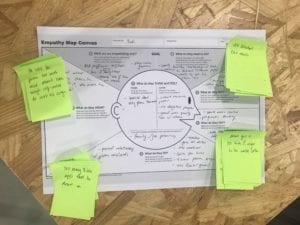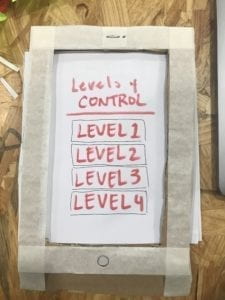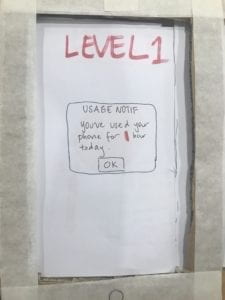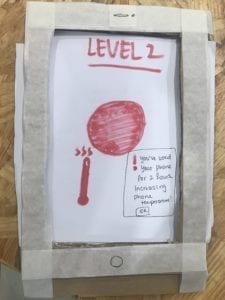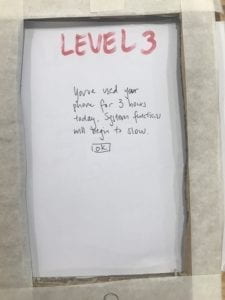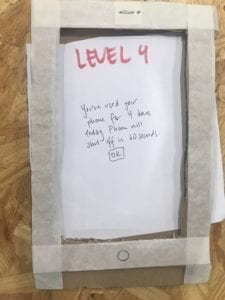For our “Dirty Design Cycle”, Group 1 was assigned to identify and potentially provide solutions for an individual using the design cycle. Our assigned subject was Rudi, an IMA professor who wanted to decrease his phone usage, especially riding the metro on the way to school. Rudi uses his phone around 4 hours a day, mainly focusing on apps such as WeChat. After identifying Rudi’s objective to decrease phone usage, we brainstormed using the empathy map and created a prototype app that would make it increasingly harder to use his phone the longer it was used.
This prototype would include 4 levels, each level making phone usage progressively harder. The first level would not be a total blockage, only notifying the user with a message, informing them how long they have used the phone. However, when reaching the second level, the phone would physically begin to rise in temperature, creating uncomfortability and encouraging the user to stop usage immediately. The third level will begin to slow down phone functions, making app usage and typing harder, to the point of frustration. Finally, the fourth level would completely shut off the device, rendering the phone completely unusable.
When presenting the prototype to the class, we received positive feedback, but also very important critique. Firstly, if the phone began to rise in temperature, especially in a location such as the metro, there would be no place to allow the phone to cool down/ continue to heat up. Taking into consideration the location, the second level proved to be a slight hazard to the user. Secondly, the final level, which shuts off all function, also proved to be an issue. If there were a possibly accident or emergency, the phone would be unable to respond or send out any messages, proving again to be a detriment. To improve upon the prototype, we could remove the heating function and change the final stage to allow emergency apps/ phone and texting.
